Maria Mitchell - Scientist Of The Day
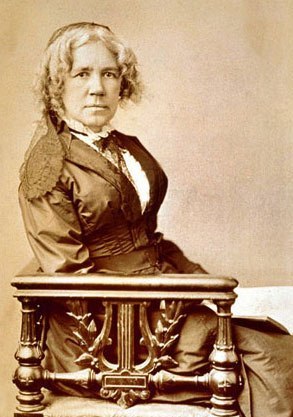
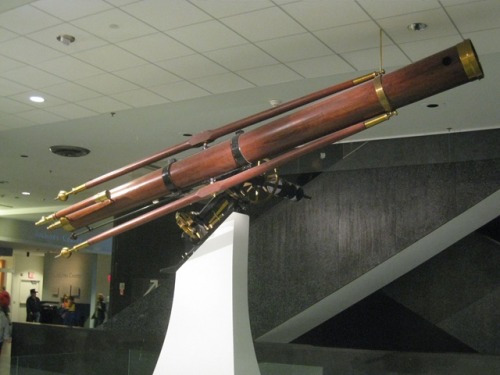
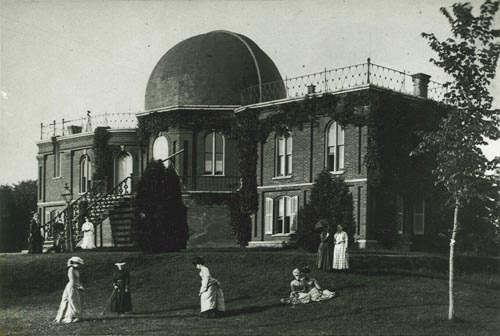
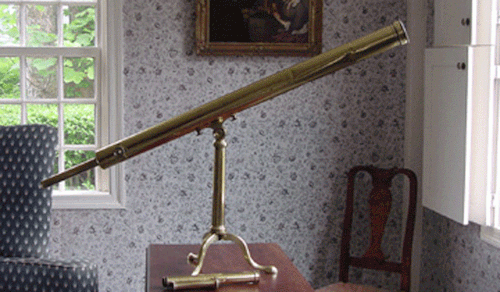
Maria Mitchell - Scientist of the Day
Maria Mitchell, an American astronomer, was born Aug. 1, 1818, in Nantucket. Mitchell was the first professional woman astronomer in the United States and a role model for generations of aspiring women scientists. She was trained by her father, a school-teacher, and had the extreme good fortune to discover a comet in 1847. Not only was she the first to see the comet, she also had the mathematical skill to calculate its orbit. Her feat won her an international gold medal from the Danish government, the first such recognition for any American woman, and eventually, the professorship of astronomy at Vassar College, also the first such position for any woman. (It is probably of interest to some of this reading audience that, before she became famous, Mitchell spent 17 years as a librarian on Nantucket.) Mitchell was admitted to various male bastions, such as the American Academy of Arts and Sciences in Boston (the only woman so honored until the 20th century), but she decided early on that, instead of trying to show men that women could be good scientists, she would spend her life showing young women that they could be good scientists. She seems to have done a superb job at this task, becoming a legendary teacher at Vassar. Antonia Maury, a noted astronomer at Harvard, was one of her pupils. The lovely albumen print portrait of Maria above is at Harvard.
In 1863, Matthew Vassar, the founder of Vassar College, personally commissioned a telescope for Mitchell from Henry Fitz, a well-known New York telescope builder. With a lense 12 inches in diameter, it was second among American telescopes only to the great refractor at Harvard (see second image above). The telescope is now in the National Museum of American History in Washington. Vassar also built an observatory for Maria; a period photo can be seen above, just below the Fitz refractor.
The small telescope that Mitchell used to discover the Nantucket comet is now mounted in her childhood home on Vestal Street (see last photo above), across from the headquarters of the Maria Mitchell Association, the group her descendants founded in 1908 to continue Mitchell’s lifelong passion for the natural sciences and science education.
Dr. William B. Ashworth, Jr., Consultant for the History of Science, Linda Hall Library and Associate Professor, Department of History, University of Missouri-Kansas City
More Posts from Astrotidbits-blog and Others
![Lynds’ Dark Nebula (LDN) 1622 [2007 X 1998] : RyanSmith || Ourspaceisbeautiful.tumblr.com](https://64.media.tumblr.com/cc5c0033b13f68ad7b0366a807a95ce1/tumblr_opc06omnDh1vuwfuqo1_500.jpg)
Lynds’ Dark Nebula (LDN) 1622 [2007 x 1998] : RyanSmith || ourspaceisbeautiful.tumblr.com
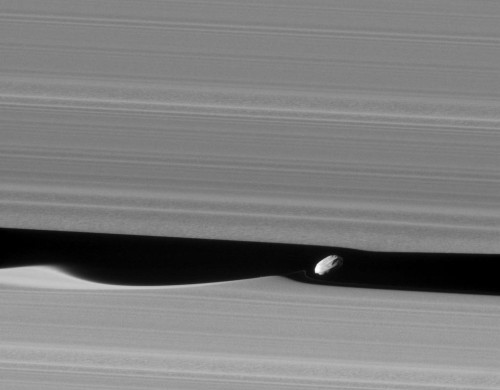
Saturn’s moon, Daphnis, and Saturn’s rings.
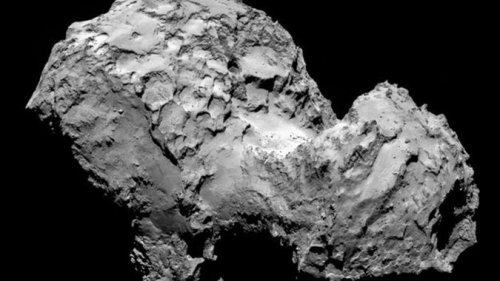
European Spacecraft Pulls Alongside Comet “After 10 years and a journey of four billion miles, the European Space Agency’s Rosetta spacecraft arrived at its destination on Wednesday for the first extended, close examination of a comet. A six-minute thruster firing at 5 a.m. Eastern time, the last in a series of 10 over the past few months, slowed Rosetta to the pace of a person walking, about two miles per hour relative to the speed of its target, Comet 67P/Churyumov-Gerasimenko.”
Find out more from the nytimes.

Radio Ham-Operator’s Field Day
(Walter B. Lane. 1946)
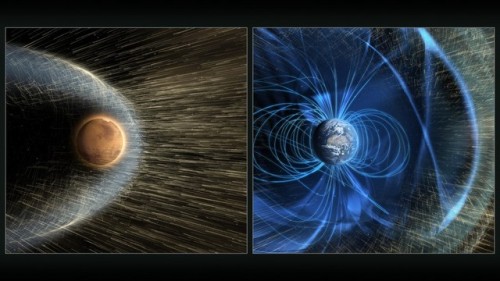
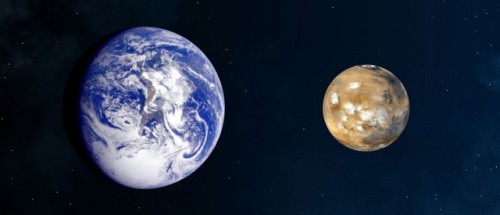
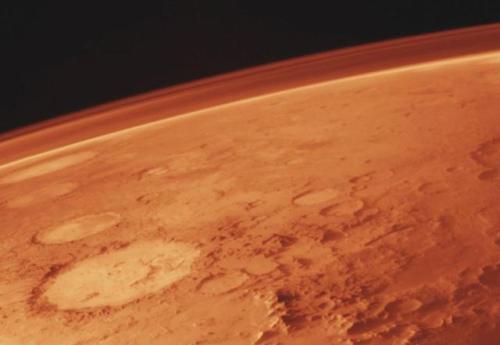
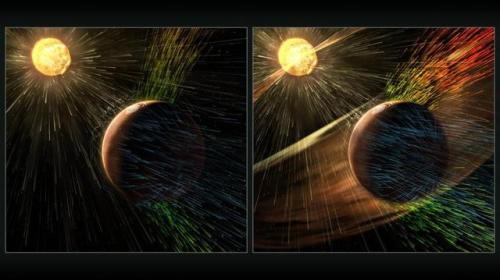
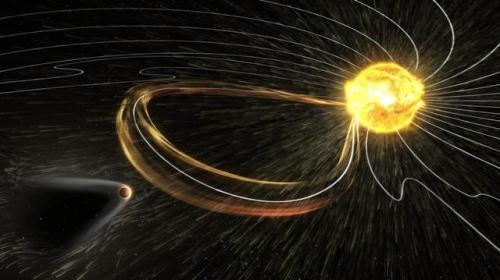
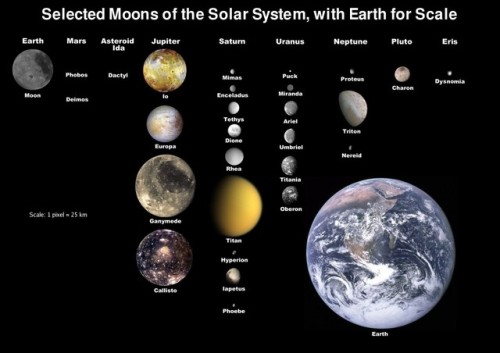
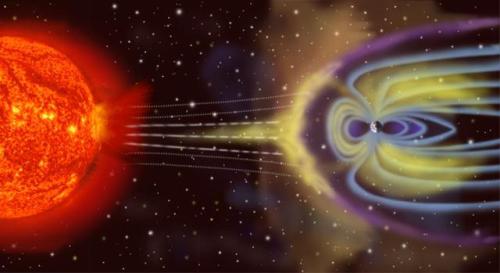
NASA’s MAVEN Discovers How Mars Lost Its Atmosphere
“The good news for us, mind you, is that the magnetic field here on Earth shows no sign of ceasing anytime soon. The dynamo in the core may do things like flip and reverse, swapping north-and-south magnetic poles, but we should continue to stay protected from the solar wind far into the foreseeable future: for billions of years (at least) to be sure. We could, conceivably, one day suffer the same fate as Mars, but our mass, our rotation and our active, dynamic core should keep the Earth’s magnetic field in business for at least as long as the Sun shines!”
If you had taken a trip to our Solar System four billion years ago, you would have found two worlds with liquid water oceans, temperate atmospheres and all the conditions we believe are needed for life. Earth would have been one of them, but Mars would have met all those criteria, too. It was long suspected that something happened to Mars around a billion years into the Solar System’s history that caused it to lose its atmosphere, something that should still be going on today. Thanks to NASA’s Maven mission, we’ve measured this atmospheric stripping by the Sun for the first time, and we’ve reached a few incredible conclusions, including that in about two billion years, Mars will be completely airless, and that if we were to terraform Mars today, it would hang onto this new atmosphere for millions of years.
Come get the full story of how Mars lost its atmosphere, and learn what NASA’s Maven mission has taught us so far!
10 Out of this World NASA Spinoff Technologies
What is a spinoff? Great question! A NASA spinoff is a technology, originally developed to meet our mission needs that has been transferred to the public and now provides benefits as a commercial product or service. Basically, we create awesome stuff and then share it with the world. Here’s a list of just a few NASA spinoff technologies (in no particular order):
1. Enriched Baby Food

While developing life support for Mars missions, NASA-funded researchers discovered a natural source for an omega-3 fatty acid that plays a key role in infant development. The ingredient has since been infused in more than 99% of infant formula on the market and is helping babies worldwide develop healthy brains, eyes and hearts.
2. Digital Camera Sensors
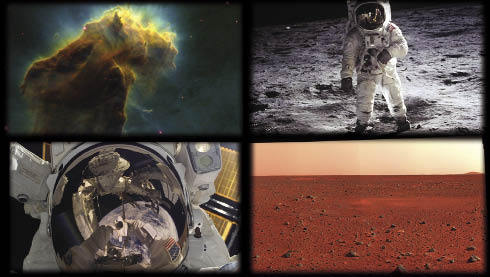
Whether you take pictures and videos with a DSLR camera, phone or even a GoPro, you’re using NASA technology. The CMOS active pixel sensor in most digital image-capturing devices was invented when we needed to miniaturize cameras for interplanetary missions.
3. Airplane Wing Designs

Did you know that we’re with you when you fly? Key aerodynamic advances made by our researchers - such as the up-turned ends of wings, called “winglets” - are ubiquitous among modern aircraft and have saved many billions of dollars in fuel costs.
4. Precision GPS

Uncorrected GPS data can be off by as much as 15 meters thanks to data errors, drift in satellite clocks and interference from Earth’s atmosphere. One of our software packages developed in the 1990s dials in these locations to within centimeters, enabling highly accurate GPS readings anywhere on the planet. One of our most important contributions to modern society, precise GPS is used in everything from personal devices and commercial airplanes to self-driving tractors.
5. Memory Foam

Possibly the most widely recognized spinoff, memory foam was invented by our researchers looking for ways to keep its test pilots and astronauts comfortable as they experienced extreme acceleration. Today, memory foam cushions beds, chairs, couches, car and motorcycle seats, shoes and even football helmets.
6. International Search and Rescue System

We pioneered the technology now used internationally for search and rescue operations. When pilots, sailors or other travelers and adventurers are stranded, they can activate a personal locator bacon that uses overhead satellites to relay their call for help and precise location to authorities.
7. Improvements to Truck Aerodynamics

Nearly every truck on the road has been shaped by NASA - literally. Agency research in vehicle aerodynamic design led to the curves and contours that help modern big rigs cut through the air with less drag. Our contributions to truck design have greatly reduced fuel consumption, perhaps by as much as 6,800 gallons per year for an average vehicle.
8. Shock Absorbers for Buildings and Bridges

Shock absorbers originally designed to survive the extreme conditions of space shuttle launches are now bracing hundreds of buildings and bridges in earthquake-prone regions all over the world. None of which have suffered even minor damage during an earthquake.
9. Advanced Water Filtration

We have recently discovered sources of water on the moon and Mars, but even so space is still practically a desert for human explorers, and every drop possible must be recycled and reused. A nanofiber filer devised to purify water in orbit is currently at work on Earth. From devices that supply water to remote villages, to a water bottle that lets hikers and adventurers stay hydrated using streams and lakes, our technology is being utilized.
10. Invisible Braces

A company working with NASA invented the translucent ceramic that became the first invisible dental braces, which would go on to become one of the best-selling orthodontic products of all time.
So, now that you know a few of the spinoff technologies that we helped develop, you can look for them throughout your day. Visit our page to learn about more spinoff technologies: https://spinoff.nasa.gov
Make sure to follow us on Tumblr for your regular dose of space: http://nasa.tumblr.com
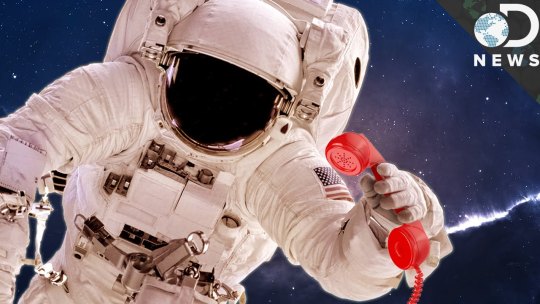
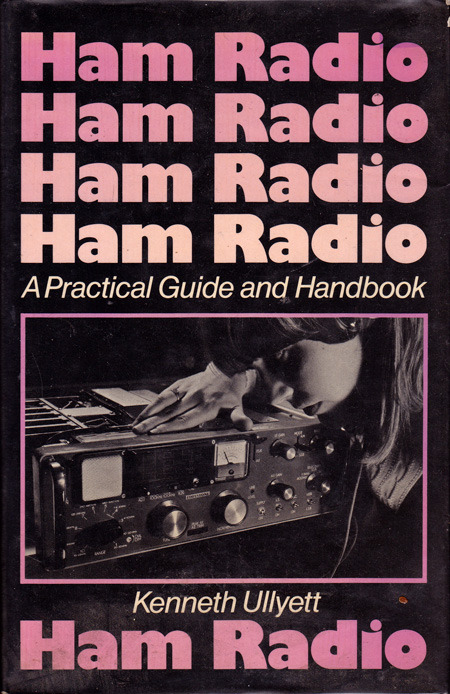
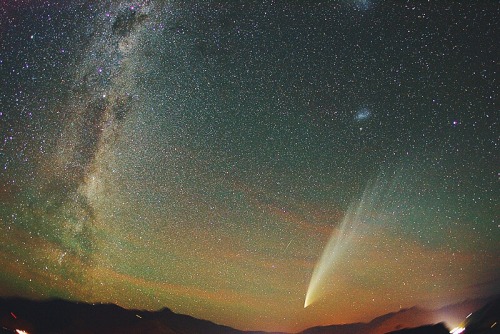

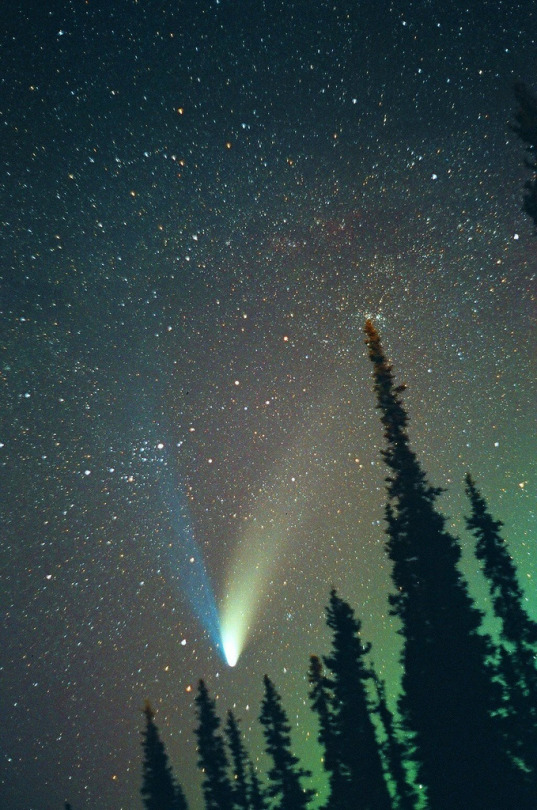
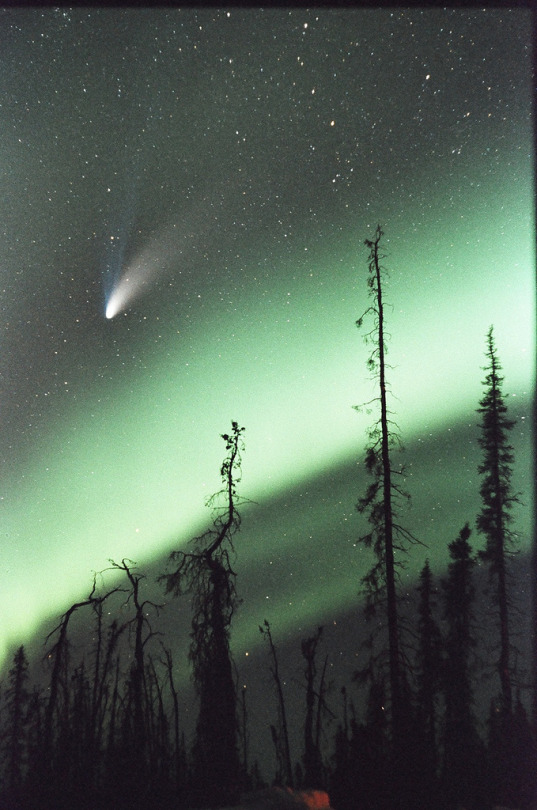
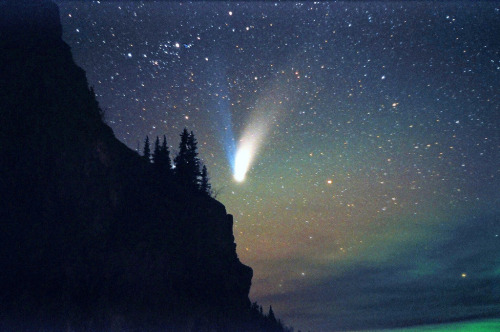
Comets by David Cartier
-
 friendlylocust liked this · 4 years ago
friendlylocust liked this · 4 years ago -
 beautifulironies reblogged this · 7 years ago
beautifulironies reblogged this · 7 years ago -
 remember-wild-blog reblogged this · 7 years ago
remember-wild-blog reblogged this · 7 years ago -
 kstolworthy liked this · 7 years ago
kstolworthy liked this · 7 years ago -
 onefaithlove liked this · 8 years ago
onefaithlove liked this · 8 years ago -
 charmingnantucket reblogged this · 8 years ago
charmingnantucket reblogged this · 8 years ago -
 harpsicalbiobug reblogged this · 8 years ago
harpsicalbiobug reblogged this · 8 years ago -
 remember-wild-blog liked this · 8 years ago
remember-wild-blog liked this · 8 years ago -
 rainyeveryday liked this · 8 years ago
rainyeveryday liked this · 8 years ago -
 xadowolfx reblogged this · 8 years ago
xadowolfx reblogged this · 8 years ago -
 lutefisk-kingdom liked this · 8 years ago
lutefisk-kingdom liked this · 8 years ago -
 whazzupniggga liked this · 8 years ago
whazzupniggga liked this · 8 years ago -
 ladymacabrenz reblogged this · 8 years ago
ladymacabrenz reblogged this · 8 years ago -
 jasjabberwocky liked this · 8 years ago
jasjabberwocky liked this · 8 years ago -
 alwaysscreechingbasement reblogged this · 8 years ago
alwaysscreechingbasement reblogged this · 8 years ago -
 piccolo-deis liked this · 8 years ago
piccolo-deis liked this · 8 years ago -
 thetruebiography liked this · 8 years ago
thetruebiography liked this · 8 years ago -
 snicksnackclickityclack reblogged this · 8 years ago
snicksnackclickityclack reblogged this · 8 years ago -
 historyofwomenphilosophers-blog reblogged this · 8 years ago
historyofwomenphilosophers-blog reblogged this · 8 years ago -
 kikymoon reblogged this · 8 years ago
kikymoon reblogged this · 8 years ago -
 kikymoon liked this · 8 years ago
kikymoon liked this · 8 years ago -
 shellyjeannebelly-blog liked this · 8 years ago
shellyjeannebelly-blog liked this · 8 years ago -
 awesomdom liked this · 8 years ago
awesomdom liked this · 8 years ago -
 lookingforco liked this · 8 years ago
lookingforco liked this · 8 years ago -
 crlcarnevali liked this · 8 years ago
crlcarnevali liked this · 8 years ago -
 thedrugsiam liked this · 8 years ago
thedrugsiam liked this · 8 years ago -
 lust-blood-insanity-blog liked this · 8 years ago
lust-blood-insanity-blog liked this · 8 years ago -
 skeptic42 reblogged this · 8 years ago
skeptic42 reblogged this · 8 years ago -
 serendip8y reblogged this · 8 years ago
serendip8y reblogged this · 8 years ago -
 serendip8y liked this · 8 years ago
serendip8y liked this · 8 years ago -
 alild reblogged this · 8 years ago
alild reblogged this · 8 years ago -
 lovevida96 liked this · 8 years ago
lovevida96 liked this · 8 years ago -
 sophiacloete reblogged this · 8 years ago
sophiacloete reblogged this · 8 years ago -
 anlili reblogged this · 8 years ago
anlili reblogged this · 8 years ago -
 livingbreathingnerd reblogged this · 8 years ago
livingbreathingnerd reblogged this · 8 years ago -
 livingbreathingnerd liked this · 8 years ago
livingbreathingnerd liked this · 8 years ago -
 kitkams liked this · 8 years ago
kitkams liked this · 8 years ago -
 itsallblogtome liked this · 8 years ago
itsallblogtome liked this · 8 years ago -
 the-pen-and-the-stethoscope liked this · 8 years ago
the-pen-and-the-stethoscope liked this · 8 years ago -
 harpsicalbiobug liked this · 8 years ago
harpsicalbiobug liked this · 8 years ago -
 skewwiff reblogged this · 8 years ago
skewwiff reblogged this · 8 years ago -
 skewwiff liked this · 8 years ago
skewwiff liked this · 8 years ago -
 markdadeellison-blog liked this · 8 years ago
markdadeellison-blog liked this · 8 years ago